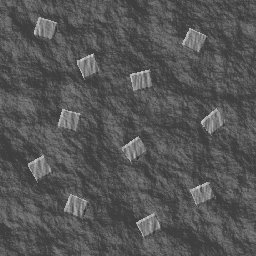
In some cases apprehended men, such as the Aboriginal warrior Musquito, became convicts themselves.

After Pemulwuy was killed in 1801, fellow warriors and resistors waged ongoing attacks on Sydney farms. Throughout this period, an Aboriginal warrior called Pemulwuy led a large group of fighters (including escaped convicts) in a prolonged war of resistance, burning crops and attacking farms across western Sydney and the Georges River. Convict farmers, as both perpetrators and victims, faced mounting hostility and remained ever vulnerable to attack. These farms were often dangerous places to be, as their expansion into Aboriginal lands west of Sydney triggered frontier warfare from the 1790s through to the 1810s. As these failed, farms were established westwards towards the Blue Mountains – firstly at Grose Farm (where Sydney University stands), then Parramatta, Toongabbie, Castle Hill and Prospect. The earliest efforts at large-scale farming took place at Farm Cove/Wogganmagule to the east of the town.
CLAY COLONY SURVIVAL SERIES
Throughout the decade, a series of expansive government farms were established to experiment with crops, train farmers and, most importantly, bolster the government’s grain and vegetable stores. In addition, coming from a country where their beloved ‘commons’ had been taken from them and enclosed, they relished this new freedom to roam and forage in the bush.īy the mid-1790s, with the colony’s future looking brighter, convict labour was directed towards larger-scale agricultural production. Historians think that this is why the population were reportedly in such good health. Convicts built their own houses, some in neat rows, others jumbled on the rugged shelves of The Rocks.Ĭonvicts also hunted, fished, and collected oysters from the foreshores, as well as vegetables and tea from the bush.

Initially, convict work was focused on the basics of survival and shelter: clearing land cutting trees forming docks, tracks, bridges and fortifications and gathering materials for storehouses and workshops, such as shingles, logs, saplings, rocks, mud, sand and oyster-shell mortar. Watkin Tench, A complete account of the settlement at Port Jackson in New South Wales including an accurate description of the situation of the colony of the natives and of its natural productions, G Nicol and J Sewell, London, 1793, Chapter 5, ‘Transactions of the colony, from the beginning of the year 1790 until the end of May following’. The scheme was ruined, however, when the Sirius struck a reef and broke apart on the island’s rocky shore. Afterwards, all things going to plan, the Sirius would continue north to China to stock up on food and supplies. Recognising the need for desperate measures, Governor Phillip ordered a further 280 convicts and marines to sail for Norfolk Island, to bolster its farming operations and increase output. With the new year dawning and the colony’s hopes fading fast, the diarist Captain-Lieutenant Watkin Tench wrote, ‘Famine besides was approaching with gigantic strides, and gloom and dejection overspread every countenance… ’ 2 Making a mercy dash to Cape Town in May 1789, the Sirius returned with little more than four months’ worth of flour.

In an attempt to learn more about them, Phillip ordered the kidnapping of several Aboriginal men in 17, but after a deadly smallpox epidemic swept around the harbour and beyond in early 1789, those who managed to survive kept their distance from the colony. Initially, there had been little contact with Aboriginal people other than violent confrontations in the bush. The first building to be finished was an observatory for the lieutenant Biography: William Dawes, perched at the end of the rocky western ridge soon to be known as Dawes Point.Ĭuriously, this isolated observatory became a stopping-off point for Aboriginal people visiting the town. In an effort to create order, future streets and building allotments had been pegged out while tentative plans for a hospital, jail, court and church were taking shape. In coming years Sydney’s buildings would owe much to this increasingly productive brickfield. On the town’s southernmost outskirts was a muddy field where clay was dug for brickmaking. Scattered among rocks and trees above the foreshore were grimy clusters of canvas tents, makeshift shelters and huts, some of which were clad in cabbage palm leaves, others in twigs and clay.įurther afield were rudimentary farming plots and gardens, along with sandstone quarries, sawpits and shingle-cutting camps where the convicts worked every day.


 0 kommentar(er)
0 kommentar(er)
